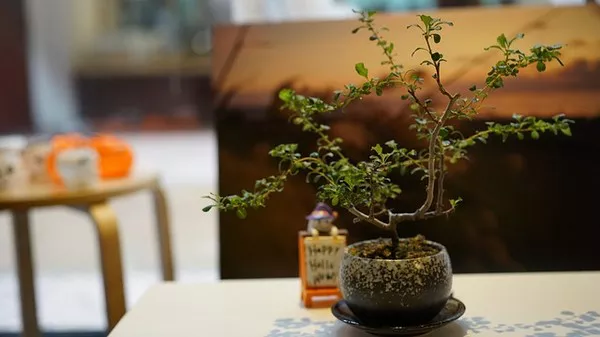Bonsai trees, with their miniature stature and serene presence, have captivated enthusiasts for centuries. These miniature trees, when carefully nurtured and tended to, can bring a sense of tranquility and beauty to any space. Among the various types of bonsai, small bonsai trees hold a special charm due to their compact size and delicate features. However, their diminutive nature requires specific care and attention to thrive. In this comprehensive guide, we delve into the art of caring for small bonsai trees, exploring everything from proper watering techniques to pruning methods and beyond.
Understanding Small Bonsai Trees
Before delving into the intricacies of caring for small bonsai trees, it’s essential to understand their unique characteristics. Small bonsai trees are typically defined by their miniature size, often standing no more than a few inches to a foot tall. Despite their diminutive stature, these trees exhibit all the hallmarks of their full-sized counterparts, including intricate branching patterns, lush foliage, and seasonal changes.
Small bonsai trees can belong to various species, including juniper, pine, maple, ficus, and more. Each species has its own specific care requirements, which must be understood to ensure the health and vitality of the bonsai.
Essential Care Practices
Placement:
Small bonsai trees thrive in environments with ample sunlight. Place your bonsai in a location that receives at least six hours of indirect sunlight daily. South-facing windows are often ideal for providing the necessary light intensity.
It’s crucial to protect small bonsai trees from extreme temperatures. Avoid placing them near drafty windows or heating vents, as sudden temperature fluctuations can stress the tree.
Watering:
Proper watering is perhaps the most critical aspect of small bonsai tree care. Unlike their larger counterparts, small bonsai trees have limited soil volume, making them more susceptible to drying out.
Check the moisture level of the soil regularly by inserting your finger into the soil up to the first knuckle. Water your bonsai thoroughly when the soil feels slightly dry to the touch, ensuring that water drains freely from the bottom of the pot.
Avoid overwatering, as this can lead to root rot. Conversely, underwatering can cause the tree to become dehydrated. Strive to maintain a consistent watering schedule, adjusting as needed based on environmental conditions.
Soil and Potting:
Small bonsai trees require well-draining soil to prevent waterlogged roots. Use a specialized bonsai soil mix or create your own by combining equal parts of akadama, pumice, and lava rock.
Repot your small bonsai tree every two to three years to refresh the soil and prevent root binding. Spring is generally the best time for repotting, as it allows the tree to recover during the growing season.
Pruning and Training:
Pruning is essential for maintaining the shape and health of small bonsai trees. Regularly trim back new growth to encourage branching and maintain the desired silhouette.
Use sharp, sterile pruning shears to make clean cuts, minimizing the risk of disease transmission. When pruning, aim to create a balanced structure while preserving the tree’s natural beauty.
Additionally, training techniques such as wiring can be employed to sculpt the bonsai into desired shapes. Exercise caution when wiring to avoid damaging the tree’s delicate branches.
Fertilization:
Small bonsai trees benefit from regular fertilization to replenish nutrients depleted from the soil. Use a balanced liquid fertilizer diluted to half strength during the growing season, typically from spring to early fall.
Reduce or eliminate fertilization during the dormant winter months to avoid stimulating unwanted growth.
Pest and Disease Management:
Monitor your small bonsai tree regularly for signs of pests such as aphids, spider mites, or scale insects. If detected, promptly treat the infestation using horticultural oil or insecticidal soap, following the manufacturer’s instructions.
Maintain good airflow around the tree and avoid overcrowding to minimize the risk of fungal diseases such as powdery mildew or root rot.
Advanced Care Techniques
Beyond the basics of watering, pruning, and fertilization, advanced care techniques can elevate your small bonsai tree to new heights of beauty and refinement.
Deadwood Techniques:
Deadwood techniques involve the intentional manipulation of dead or aged wood to create visual interest and mimic the effects of natural aging. Common methods include carving, hollowing, and jin, which involves stripping bark to expose the underlying wood.
Exercise caution when employing deadwood techniques, as improper execution can damage the tree or compromise its health.
Grafting:
Grafting allows bonsai enthusiasts to combine desirable traits from different tree varieties onto a single specimen. This technique is often used to alter the characteristics of the bonsai, such as foliage type or flowering habit.
Grafting should be undertaken with precision and patience, as it requires careful alignment of cambium layers and meticulous post-operative care.
Root Pruning:
Root pruning is essential for maintaining the health and vitality of small bonsai trees. When repotting, carefully trim back the roots to encourage new growth and prevent root binding.
Use sharp, sterile tools to avoid damaging the roots, and ensure that the remaining root system is adequately hydrated and protected during the recovery period.
Seasonal Care:
Small bonsai trees exhibit seasonal changes in growth and dormancy, necessitating adjustments to care routines throughout the year. During the winter months, reduce watering frequency and protect the tree from freezing temperatures.
In spring and summer, increase watering and fertilization to support vigorous growth, while autumn signals a gradual reduction in both to prepare the tree for winter dormancy.
Conclusion
Caring for a small bonsai tree is a deeply rewarding endeavor that requires patience, dedication, and a deep understanding of the tree’s unique needs. By mastering the art of watering, pruning, fertilization, and other essential care practices, you can cultivate a miniature masterpiece that brings joy and tranquility for years to come. Whether you’re a seasoned bonsai enthusiast or a novice gardener, the journey of nurturing a small bonsai tree is sure to inspire wonder and appreciation for the beauty of nature in miniature.


